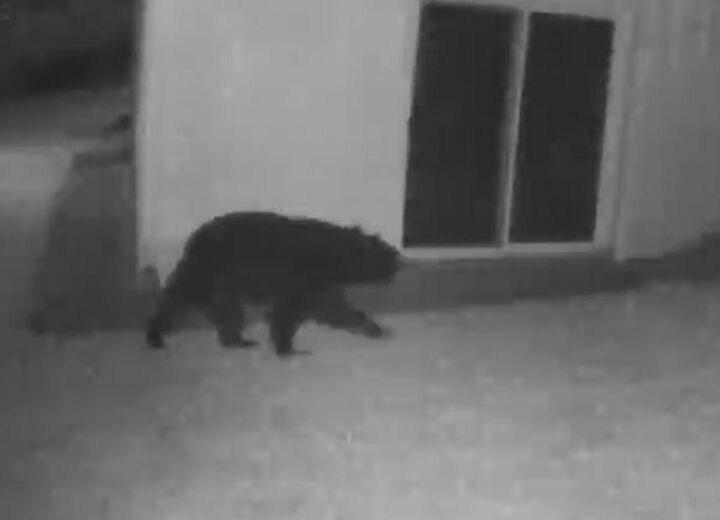
More bear sightings have been reported in Montgomery County, Maryland.
Sightings of a “large black bear” has been recently reported in the areas of Woodley Gardens and Great Falls Road, according to the Rockville City Police Department. Residents who see a bear are asked to call Rockville police’s non-emergency line at (240) 314-8900.
These latest sightings come after a reported sighting Sunday night at the Naval Support Activity Bethesda base by Walter Reed Medical Center, plus two sightings last week in Kensington and Chevy Chase, as WTOP previously reported.
Jim Bennett, with the Wildlife & Heritage Service of Maryland’s Department of Natural Resources, said a bear can travel up to 10 miles daily. He said suburban homes, where trash cans and birdfeeders can provide easy and filling meals, are attractive for the animals.
The National Park Service suggests the following tips, if you find yourself in an encounter with a bear:
- Identify yourself by talking calmly so the bear knows you are a human and not a prey animal. Remain still; stand your ground but slowly wave your arms. Help the bear recognize you as a human. It may come closer or stand on its hind legs to get a better look or smell. A standing bear is usually curious, not threatening.
- Stay calm and remember that most bears do not want to attack you; they usually just want to be left alone. Bears may bluff their way out of an encounter by charging and then turning away at the last second. Bears may also react defensively by woofing, yawning, salivating, growling, snapping their jaws, and laying their ears back. Continue to talk to the bear in low tones; this will help you stay calmer, and it won’t be threatening to the bear. A scream or sudden movement may trigger an attack. Never imitate bear sounds or make a high-pitched squeal.
- Pick up small children immediately. Do not make any loud noises or screams — the bear may think it’s the sound of a prey animal. Slowly wave your arms above your head and tell the bear to back off. Do NOT run or make any sudden movements.
- Hike and travel in groups. Groups of people are usually noisier and smellier than a single person. Therefore, bears often become aware of groups of people at greater distances, and because of their cumulative size, groups are also intimidating to bears.
- Make yourselves look as large as possible (for example, move to higher ground).
- Do NOT allow the bear access to your food. Getting your food will only encourage the bear and make the problem worse for others.
- Do NOT drop your pack as it can provide protection for your back and prevent a bear from accessing your food.
- If the bear is stationary, move away slowly and sideways; this allows you to keep an eye on the bear and avoid tripping. Moving sideways is also nonthreatening to bears.
- Do NOT run, but if the bear follows, stop and hold your ground. Bears can run as fast as a racehorse both uphill and down. Like dogs, they will chase fleeing animals.
- Do NOT climb a tree. Both grizzlies and black bears can climb trees.
- Leave the area or take a detour. If this is impossible, wait until the bear moves away. Always leave the bear an escape route.
- Be especially cautious if you see a female with cubs; never place yourself between a mother and her cub, and never attempt to approach them. The chances of an attack escalate greatly if she perceives you as a danger to her cubs.








